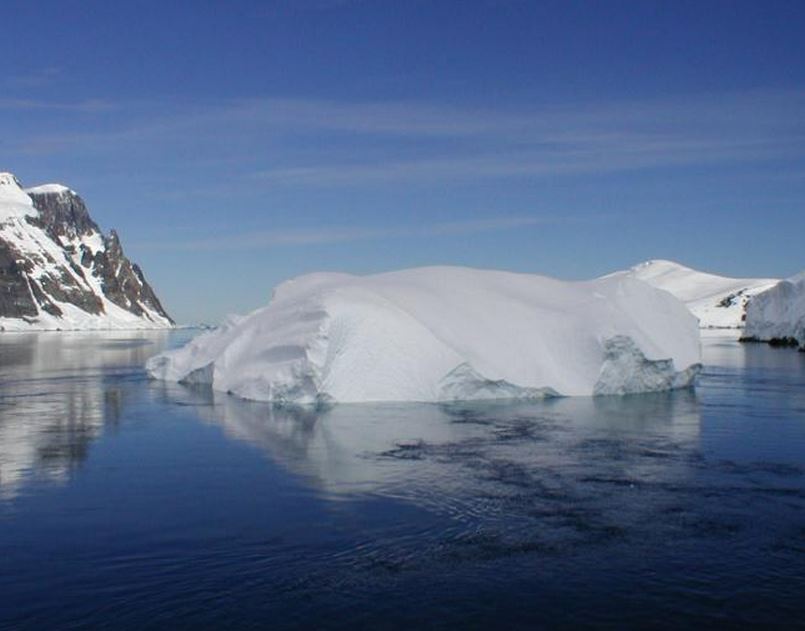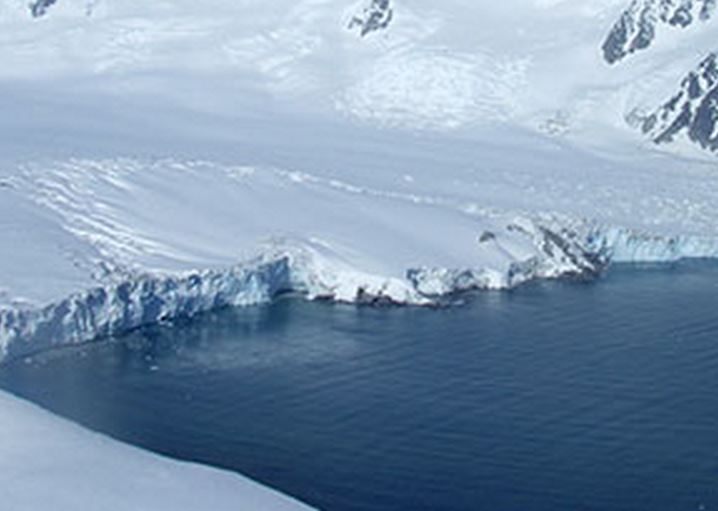A huge part of Antarctica, a 750 kilometre-long stretch of glaciers, has been shedding ice at 60 cubic km or around 55 trillion litres of water per year since 2009, a group of scientists from the Netherlands, UK, France and Germany reported earlier this week.
The glaciers at the Southern Antarctic Peninsula had been stable, showing no signs of change until six years ago, said the research team led by the University of Bristol, who used measurements of the elevation of the Antarctic ice sheet made by a number of satellites.
The researchers wrote about their study in the journal Science.
 More and more ice is breaking off, floating into the ocean and melting. (Image: Utrecht University)
More and more ice is breaking off, floating into the ocean and melting. (Image: Utrecht University)
This particular ice loss, which does not seem to show any signs of waning, is Antarctica’s second largest contributor to the rise in sea levels.
Co-author and study leader, Dr. Bert Wouters, a Marie Curie Fellow at the University of Bristol, said:
“To date, the glaciers added roughly 300 cubic km of water to the ocean. That’s the equivalent of the volume of nearly 350,000 Empire State Buildings combined.”
Dr. Wouters and colleagues used information from observations by the CryoSat-2, a European Space Agency (ESA) environmental research satellite that was launched in 2010, dedicated to remote-sensing of ice.
The satellite emits a radar pulse from its 700km low-orbit to the Earth’s surface, specifically to polar ice. The pulse is subsequently bounced back to the satellite.
By measuring how long the pulse takes to hit the ice and bounce back to the satellite, its instruments can work out the ice’s elevation.
Glaciers losing altitude
After collecting and analyzing 5 years’-worth of data, the authors found that the ice surface of several of the glaciers in the Southern Antarctic Peninsula was going down by up to 4 metres each year.
The ice loss in that region is so extensive that it has caused marginal changes in the Earth’s gravity field, according to data from a satellite called GRACE (Gravity Recovery and Climate Experiment), a joint mission of NASA and the German Aerospace Center.
 In this image, taken at Livingstone Island located near the Antarctic Peninsula, you can see some ice breaking off from a glacier. It will soon slide into the sea and melt. (Image: University of Bristol)
In this image, taken at Livingstone Island located near the Antarctic Peninsula, you can see some ice breaking off from a glacier. It will soon slide into the sea and melt. (Image: University of Bristol)
Dr. Wouters said:
“The fact that so many glaciers in such a large region suddenly started to lose ice came as a surprise to us. It shows a very fast response of the ice sheet: in just a few years the dynamic regime completely shifted.”
According to data from an Antarctic climate model, the changes were not caused by alterations in snowfall or air temperature, the scientists said.
Many of the glaciers in the region feed into ice shelves that float on the surface of the sea. They act as the final obstacle, slowing down the movement of ice stuck to bedrock further inland toward the ocean.
Stronger winds pushing warm water to South Pole
As a consequence of climate warming and ozone depletion, the westerly winds that encircle Antarctica have become stronger over the last few decades.
Stronger winds push the warmer seawater from the Southern Ocean toward the South Pole, where they melt the glaciers and floating ice shelves from below.
The ice shelves in the Southern Antarctic Peninsula have lost almost one-fifth of their thickness over the past twenty years, which means the resisting force on the glaciers is further reduced.
Also of concern is that further inland, much of the ice which is grounded on bedrock is below sea level. This means that warm sea water will flow inland and melt the glaciers, even if they retreat.
Dr Wouters explained:
“It appears that sometime around 2009, the ice shelf thinning and the subsurface melting of the glaciers passed a critical threshold which triggered the sudden ice loss. However, compared to other regions in Antarctica, the Southern Peninsula is rather understudied, exactly because it did not show any changes in the past, ironically.”
“To pinpoint the cause of the changes, more data need to be collected. A detailed knowledge of the geometry of the local ice shelves, the ocean floor topography, ice sheet thickness and glacier flow speeds are crucial to tell how much longer the thinning will continue.”
Reference: Bert Wouters, Alba Martin-Español, Veit Helm, Thomas Flament, Melchior van Wessem, Stefan Ligtenberg, Michiel van den Broeke and Jonathan Bamber. “Dynamic thinning of glaciers on the Southern Antarctic Peninsula.” Science. Published May 21, 2015. DOI: 10.1126/science.aaa5727.
Huge Antarctic ice shelf collapsing
In a separate study, scientists from NASA’s Jet Propulsion Laboratory (JPL) in Pasadena, California, reported that a huge Antarctic ice shelf – Larsen B – is weakening ultra-rapidly and will probably collapse completely and vanish by the end of this decade.
Larsen B partially collapsed in 2002. The remaining section is flowing much faster today and is becoming progressively fragmented – it has also developed massive cracks.
Of its three tributary glaciers, two are flowing much faster and thinning rapidly, the researchers added.
